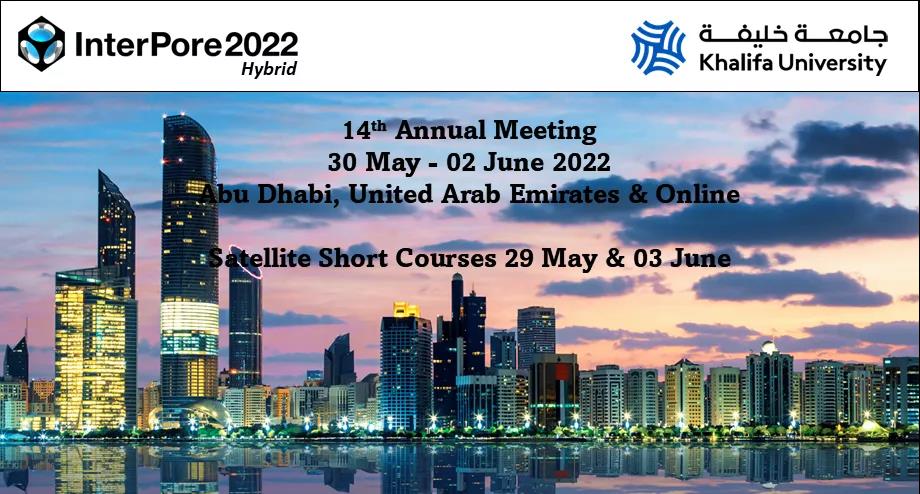Experimental investigation into gas migration mechanism in submarine sandy sediments at pore-scale
Abstract view|264|times PDF download|116|times
Abstract
The dissociation of natural gas hydrate usually induces gas migration within shallow marine sediments, which has been widely reported to trigger geological hazards and submarine facility failure. To date, the mechanisms by which gas migration governs internal structural evolution and seafloor morphological changes remain poorly understood. This study investigates the gas migration behavior and associated morphological changes in sandy sediments using a novel experimental setup that integrates X-ray computed tomography scanning technology with a custom-built seepage apparatus. The apparatus enables gas injection with constant flow rate and real-time observation of the occurrence and migration process of gas within sediments. Experiments were conducted on Fujian sand with different particle sizes and gas flow rates, demonstrating that gas migration follows a particle-displacement pattern in fine-grained sediments and a pore-invasion pattern otherwise. The study further explores the dynamics of gas pocket formation, as well as the channel healing and re-opening behavior. The results demonstrate the porescale mechanism governing morphological evolution of seabed, with pockmarks and knolls at the surface and elongated chimney-like channels underneath. This work also highlights the advantage of X-ray computed tomography techniques for understanding gas migration processes in marine sediments.
Document Type: Original article
Cited as: Sun, W., Kong, D., Li, Z., Peng, Y., Chen, Y., Cheng, Y. P., Zhu, B. Experimental investigation into gas migration mechanism in submarine sandy sediments at pore-scale. Advances in Geo-Energy Research, 2025, 17(1): 30-42. https://doi.org/10.46690/ager.2025.07.03
Keywords
Full Text:
PDFReferences
Algar, C. K., Boudreau, B. P., Barry, M. A. Initial rise of bubbles in cohesive sediments by a process of viscoelastic fracture. Journal of Geophysical Research: Solid Earth, 2011, 116: B04207.
Barry, M. A., Boudreau, B. P., Johnson, B. D., et al. Firstorder description of the mechanical fracture behavior of fine-grained surficial marine sediments during gas bubble growth. Journal of Geophysical Research: Earth Surface, 2010, 115: F04029.
Biscay, F., Ghoufi, A., Lachet, V., et al. Monte Carlo calculation of the methane-water interfacial tension at high pressures. The Journal of Chemical Physics, 2009, 131: 124707.
Cai, J., Xia, Y., Lu, C., et al. Creeping microstructure and fractal permeability model of natural gas hydrate reservoir. Marine and Petroleum Geology, 2020, 115: 104282.
Campbell, J. M., Ozturk, D., Sandnes, B. Gas-driven fracturing of saturated granular media. Physical Review Applied, 2017, 8(6): 064029.
Cao, S., Li, X., Jung, J., Li, X. Experimental techniques for studying interfacial dynamics and sediment response during CH4-CO2 hydrate replacement. Capillarity, 2025, 15(3): 53-57.
Cartwright, J., Santamarina, C. Seismic characteristics of fluid escape pipes in sedimentary basins: Implications for pipe genesis. Marine and Petroleum Geology, 2015, 65: 126140.
Choi, J. H., Seol, Y., Boswell, R., et al. X-ray computedtomography imaging of gas migration in water-saturated sediments: From capillary invasion to conduit opening. Geophysical Research Letters, 2011, 38: L17310.
Clarke, R. H., Cleverly, R. W. Petroleum seepage and postaccumulation migration. Geological Society, London, Special Publications, 1991, 59: 265-271.
Claypool, G, E., Kaplan, I. R. The origin and distribution of methane in marine sediments, in Natural Gases in Marine Sediments, edited by I. R. Kaplan, Springer, Boston, pp. 99-139, 1974.
Claypool, G. E., Kvenvolden, K. A. Methane and other hydrocarbon gases in marine sediment. Annual Review of Earth and Planetary Sciences, 1983, 11: 299-327.
Flohr, A., Schaap, A., Achterberg, E. P., et al. Towards improved monitoring of offshore carbon storage: a realworld field experiment detecting a controlled sub-seafloor CO2 release. International Journal of Greenhouse Gas Control, 2021, 106: 103237.
Gong, X., Wang, L. Marine Geotechnical Engineering. Beijing, China Architecture and Building Press, 2022. (in Chinese)
Guo, Z., Gao, X., Wu, H., et al. Failure patterns in layered gas-storage systems. Advances in Geo-Energy Research, 2024, 12(3): 183-193.
Holtzman, R., Szulczewski, M. L., Juanes, R. Capillary fracturing in granular media. Physical Review Letters, 2012, 108(26): 264504.
Hu, L., Meegoda, J. N., Li, H., et al. Study of flow transitions during air sparging using the geotechnical centrifuge. Journal of Environmental Engineering, 2015, 141(1): 04014048.
Iglauer, S., Paluszny, A., Pentland, C. H., et al. Residual CO2 imaged with X-ray micro-tomography. Geophysical Research Letters, 2011, 38: L21403.
Jain, A. K., Juanes, R. Preferential mode of gas invasion in sediments: Grain-scale mechanistic model of coupled multiphase fluid flow and sediment mechanics. Journal of Geophysical Research: Solid Earth, 2009, 114: 08101.
Johnson, B. D., Boudreau, B. P., Gardiner, B. S., et al. Mechanical response of sediments to bubble growth. Marine Geology, 2002, 187(3-4): 347-363.
Kong, D., Fonseca, J. Quantification of the morphology of shelly carbonate sands using 3D images. Géotechnique, 2018, 68(3): 249-261.
Kou, B., Cao, Y., Li, J., et al. Granular materials flow like complex fluids. Nature, 2017, 551(7680): 360-363.
Lei, L., Seol, Y., Choi, J. H., et al. Pore habit of methane hydrate and its evolution in sediment matrix-Laboratory visualization with phase-contrast micro-CT. Marine and Petroleum Geology, 2019, 104: 451-467.
Lenormand, R., Zarcone, C., Sarr, A. Mechanisms of the displacement of one fluid by another in a network of capillary ducts. Journal of Fluid Mechanics, 1983, 135: 337-353.
Lin, Q., Bijeljic, B., Berg, S., et al. Minimal surfaces in porous media: Pore-scale imaging of multiphase flow in an altered-wettability Bentheimer sandstone. Physical Review E, 2019, 99(6): 063105.
Liu, L., Wilkinson, J., Koca, K., et al. The role of sediment structure in gas bubble storage and release. Journal of Geophysical Research: Biogeosciences, 2016, 121(7): 1992-2005.
Lu, T. Research on the microstructural characteristics and seepage simulation of loess in Xi’an, North of China. Xi’an, Chang’an University, 2024. (in Chinese)
Ma, G., Zhan, L., Lu, H., et al. Structures in shallow marine sediments associated with gas and fluid migration. Journal of Marine Science and Engineering, 2021, 9(4): 396.
Mason, G., Morrow, N. R. Capillary behavior of a perfectly wetting liquid in irregular triangular tubes. Journal of Colloid and Interface Science, 1991, 141(1): 262-274.
Orange, D. L., Teas, P. A., Decker, J., et al. The utilisation of seaseep surveys (a defense/hydrography spin-off) to identify and sample hydrocarbon seeps in offshore Frontier Basins. Paper cp-148-00254 Presented at International Petroleum Technology Conference, Kuala Lumpur, Malaysia, 3-5 December, 2008.
Pape, T., Geprägs, P., Hammerschmidt, S., et al. Hydrocarbon seepage and its sources at mud volcanoes of the Kumano forearc basin, Nankai Trough subduction zone. Geochemistry, Geophysics, Geosystems, 2014, 15(6): 2180-2194.
Patzek, T. W. Verification of a complete pore network simulator of drainage and imbibition. SPE Journal, 2001, 6(2): 144-156.
Pau, M., Hammer, Ø., Chand, S. Constraints on the dynamics of pockmarks in the SW Barents Sea: Evidence from gravity coring and high-resolution, shallow seismic profiles. Marine Geology, 2014, 355: 330-345.
Puzrin, A. M., Tront, J., Schmid, A., et al. Engineered use of microbial gas production to decrease primary consolidation settlement in clayey soils. Géotechnique, 2011, 61(9): 785-794.
Roche, B., Bull, J. M., Marin-Moreno, H., et al. Time-lapse imaging of CO2 migration within near-surface sediments during a controlled sub-seabed release experiment. International Journal of Greenhouse Gas Control, 2021, 109: 103363.
Rogener, M. K., Bracco, A., Hunter, K. S., et al. Longterm impact of the Deepwater Horizon oil well blowout on methane oxidation dynamics in the northern Gulf of Mexico. Elementa: Science of the Anthropocene, 2018, 6: 73.
Seol, Y., Lei, L., Choi, J. H., et al. Integration of triaxial testing and pore-scale visualization of methane hydrate bearing sediments. Review of Scientific Instruments, 2019, 90(12): 124504.
Sirhan, S. T., Katsman, R., Lazar, M. Methane bubble ascent within fine-grained cohesive aquatic sediments: dynamics and controlling factors. Environmental Science and Technology, 2019, 53(11): 6320-6329.
Srivastava, A., Kikuchi, K., Ishikawa, T. Microbial Brazil nut effect. Soft Matter, 2021, 17(46): 10428-10436.
Sultan, N., De, Gennaro. V., Puech, A. Mechanical behaviour of gas-charged marine plastic sediments. Géotechnique, 2012, 62(9): 751-766.
Sultan, N., Plaza-Faverola, A., Vadakkepuliyambatta, S., et al. Impact of tides and sea-level on deep-sea Arctic methane emissions. Nature Communications, 2020, 11(1): 5087.
Sun, Z., Santamarina, J. C. Grain-displacive gas migration in fine-grained sediments. Journal of Geophysical Research: Solid Earth, 2019, 124(3): 2274-2285.
Wang, P., Wang, L., Kong, D., et al. Experimental evaluation of gas production from hydrate-bearing sediments via combined hydraulic fracturing and depressurization method. Gas Science and Engineering, 2025a, 136: 205566.
Wang, S., Kong, D., Tan, J., et al. Mechanisms driving pathway-opening migration of gas in marine clayey sediments. Engineering Geology, 2025b, 348: 107965.
Wei, J., Li, J., Wu, T., et al. Geologically controlled intermittent gas eruption and its impact on bottom water temperature and chemosynthetic communities–A case study in the “HaiMa” cold seeps, South China Sea. Geological Journal, 2020, 55(9): 6066-6078.
Xu, Y., Wu, H., Shen, J., et al. Risk and impacts on the environment of free-phase biogas in Quaternary deposits along the coastal region of Shanghai. Ocean Engineering, 2017, 137: 129-137.
Yan, X. Study of slope deformation and failure induced by gas movement in shallow seabed. Hangzhou, Zhejiang University, 2020. (in Chinese)
Yan, X., Xie, W., Wei, Z., et al. Experimental model of pockmarks from gas hydrate decomposition by aeration. Proceedings of the Institution of Civil EngineersMaritime Engineering, 2021, 174(1): 4-10.
Yoneda, J., Oshima, M., Kida, M., et al. Permeability variation and anisotropy of gas hydrate-bearing pressure-core sediments recovered from the Krishna-Godavari Basin, offshore India. Marine and Petroleum Geology, 2019, 108: 524-536.
DOI: https://doi.org/10.46690/ager.2025.07.03
Refbacks
- There are currently no refbacks.
Copyright (c) 2025 The Author(s)

This work is licensed under a Creative Commons Attribution-NonCommercial-NoDerivatives 4.0 International License.


